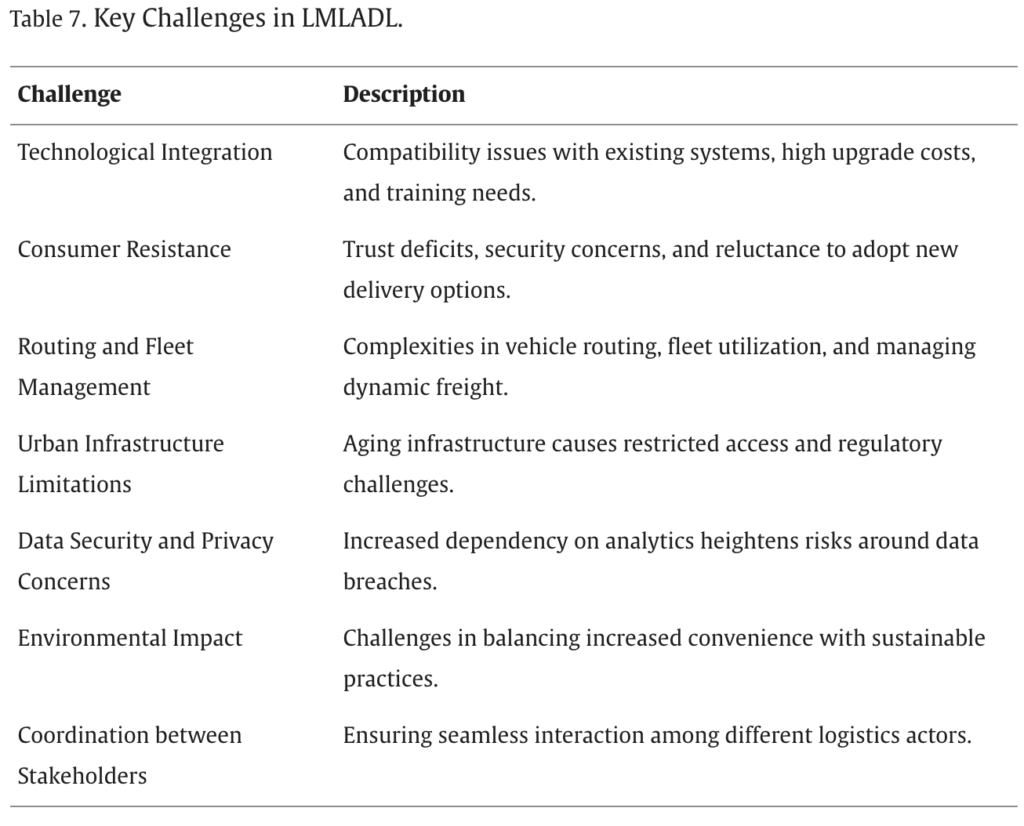Last-mile logistics is a pivotal component of modern supply chains, especially in retail. Despite its importance in ensuring prompt deliveries to end-users, it is often regarded as the most costly and inefficient segment of the logistics process. Beyond financial implications, last-mile logistics also presents significant environmental challenges and contributes to negative social externalities, affecting customer satisfaction and retention.
A recent paper conducts a systematic and bibliometric review of 257 academic publications focused on the evolving field of last-mile logistics, particularly emerging trends in Alternative Delivery Locations (ADL). Data sourced from Scopus and Web of Science underpin this analysis. Using a theory refinement approach, the study critiques and enhances existing supply chain management (SCM) frameworks to better understand and improve last-mile logistics through innovative and sustainable delivery methods.
Notably, over 89% of these publications have appeared in the last six years, highlighting a surge in interest toward sustainable and innovative delivery solutions such as parcel lockers, roaming delivery points, and mobile distribution systems. The findings suggest that integrating ADL strategies significantly boosts customer satisfaction by addressing key delivery challenges related to flexibility and sustainability.

Key findings from our review of LMLADL yield crucial directives for managers:
Technology’s Role: Leveraging technologies such as AI and IoT can revolutionize delivery, especially with AI-driven route optimization and IoT-enabled real-time tracking. Investments promise amplified delivery accuracy.
Consumer-Centricity: Today’s digital-savvy consumer expects precision, transparency, and personalization. Firms should prioritize these, especially given the growing e-commerce sector, to maintain their competitive edge.
Sustainability Imperative: Integrating green initiatives like electric vehicles and efficient route planning is paramount with mounting environmental challenges. Such measures resonate with modern consumer values and expectations.
Embracing Localization: The rise of urban-centric delivery hubs signifies the benefits of proximity in logistics. This, combined with tailored delivery slots, can redefine consumer satisfaction metrics.
Anticipating the Future: The future holds myriad prospects, from bespoke technological applications and green delivery innovations to strategies like off-peak delivery pricing.
The review offers practical insights for industry professionals, underscoring the critical role of ADL in last-mile logistics strategies. By adopting these approaches, businesses can reduce operational costs, lessen environmental impacts, and enhance efficiency. Retailers, in particular, can apply these insights to align their delivery models with shifting consumer expectations and sustainability objectives, ensuring they remain competitive in a rapidly evolving market landscape.
